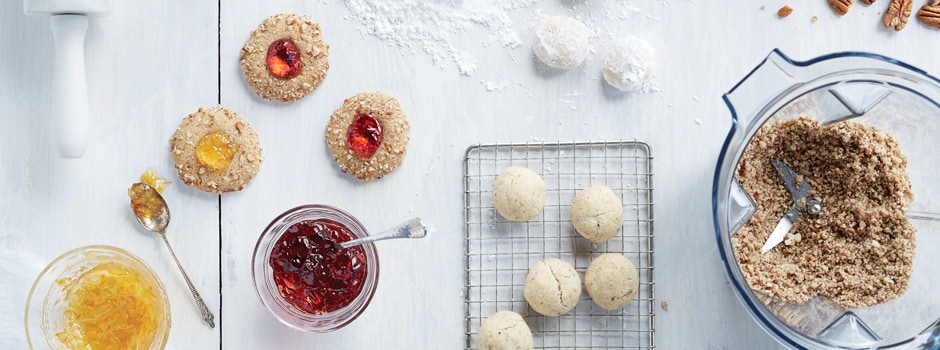Cookies are a stamp of the holiday season, right up there with decorated trees and colorful lights. If you're content with gingerbread men and sugar cookie Santas, you're missing out. There’s an untold number of holiday cookies from across the globe, and you never know which one might turn out to be your new favorite.
Ginger and Spice Cookies
For centuries, spices were among the costliest of commodities, often literally worth their weight in gold. Many traditional Christmas cookies make liberal use of spices to emphasize the importance of the celebration. The familiar gingerbread men you've made for years have numerous European cousins, including Polish pierniczki and Hungarian mezeskalacs. Two of the most beloved German Christmas cookies are also heavily spiced: Lebkuchen, which are soft and delicate like sugar cookies, and pfeffernussen — "pepper nuts" — which are hard and crunchy like gingersnaps. Some recipes for pfeffernussen include black pepper, which complements warm spices surprisingly well.
Interesting Shapes
Not all cookies are round — include a few uniquely-shaped confections on your holiday tray to add international flair and heightened visual interest. One easy choice is vanillakipferl, a rich and buttery cookie (not unlike shortbread) that's formed into a crescent shape. There's also an almond-flavored version, and both are popular across most of Central Europe. The Neapolitans make S-shaped susamielli, a honey-and-spice cookie. In Molise, just to the north, they make bow-shaped Christmas cookies called caragnole that are fried rather than baked (as are Polish "angel wing" cookies or chrusciki). Czech hoblovacky or "carpenter's curls" are molded into shapes resembling American corn chips while they're still warm.
Pressed Cookies
Some of the most impressive cookies are pressed into intricately carved molds, creating miniature sculptures in edible form. Licorice-flavored Swiss änisbrötli fall into this category. So do Dutch speculaas and German springerle. If you want to make them, look for the molds in specialty markets or order them online. For a slightly less ambitious take, try “spritz” cookies. They're similar to shortbread recipes, but they can be extra rich and delicate because you don't have to work the dough by hand.
Nut-Based Cookies
Nuts are at their freshest in late fall and early winter, so it's only natural that many Christmas cookies are nut-based. Cinnamon stars are one of the best-known examples. They're made in slightly different versions across German-speaking countries and parts of Eastern Europe, but they all use the same basic mixture of ground nuts, sugar and egg whites. Linzer cookies are another nut-based classic. They're filled with jam, like a full-sized Linzertorte, and the top half of the cookie is cut creatively to let the jam show through. You can whip up a dough for one (or all!) of these nutty cookies in no time flat using your Vitamix machine.
Filled Cookies
Linzer cookies also represent a large family of filled and stuffed cookies. Many follow the same sandwich pattern, with a plain bottom and shaped top surrounding a jam or fruit filling. Use a basic butter or sugar cookie dough rather than a nut dough, and mix up your own filling (like this fig jam) with a few pulses of your Vitamix machine. Some filled cookies, including the famous Czech kolacky, have an indentation filled with jam in the same style as "thumbprint" cookies. Serbian kifle use a rolled dough, cut into triangles and folded croissant-style around a jam filling. Russian pryaniki are pressed into a mold and then filled, giving them an embossed surface that combines the filled and pressed styles.
Related Articles

Healthier Holiday Cookie Recipes
Nothing welcomes the holiday season like the smell of freshly baked goodies filling your home.

Your Holiday Menu Shopping List
Holiday feasts and treats are among the best traditions of the year. Massive spreads bursting with your favorite seasonal flavors are sure to satisfy even the hungriest bellies and strongest cravings.

Christmas Countdown Prep List
With this Christmas countdown prep list, you’ll get most of your holiday duties out of the way weeks before the big day — so you can actually enjoy Christmas when it comes.
